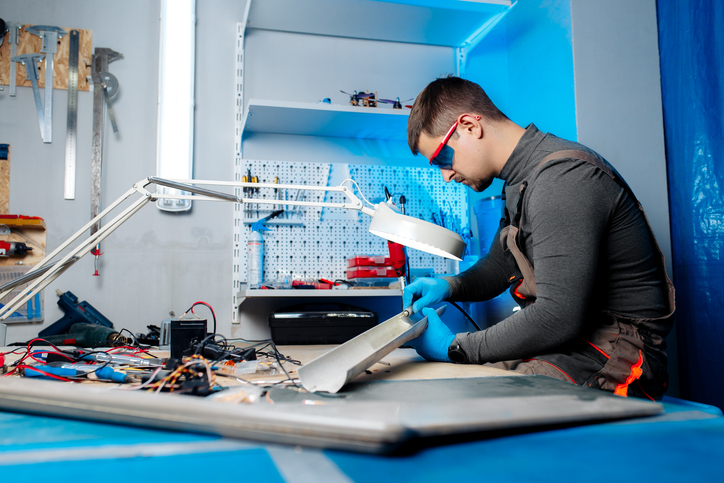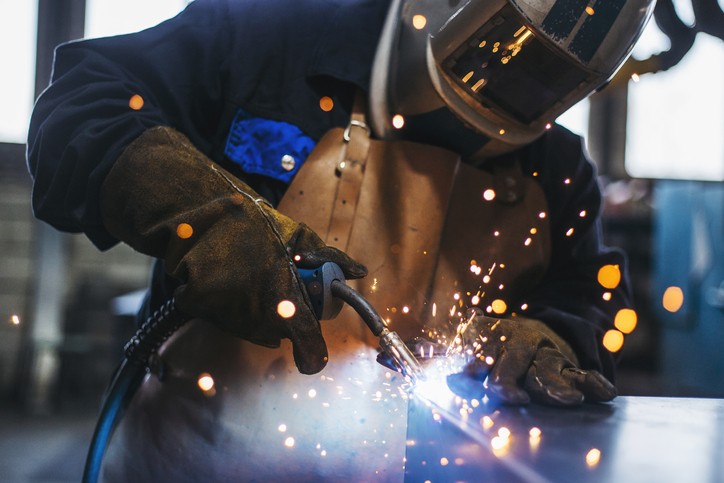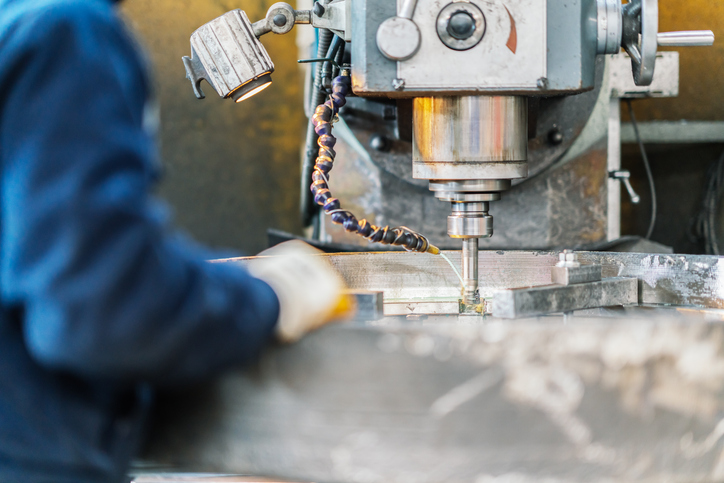- Understanding the Fundamentals of 5-Axis Milling
- Industry Trends Driving 5-Axis Adoption
- Transformative Advantages in Defense and Aerospace Manufacturing
- Real-World Applications Transforming Manufacturing
- Implementation Challenges and Solutions
- Future Innovations Shaping Manufacturing Capabilities
- The Strategic Advantage of Specialized Manufacturing Partners
- Frequently Asked Questions
Technology transforms industries. Manufacturing evolves constantly. Innovation drives progress. In the world of precision manufacturing, few advancements have reshaped capabilities as profoundly as 5-axis milling technology. This sophisticated machining approach has fundamentally altered what’s possible in metal fabrication, particularly for industries where precision isn’t just preferred but essential.
As global competition intensifies and design complexity increases, manufacturers face mounting pressure to produce intricate components with unprecedented accuracy while maintaining efficiency. The defense and aerospace sectors, where component failure simply isn’t an option, stand at the forefront of adopting these advanced manufacturing methodologies. Understanding the transformative impact of 5-axis milling reveals not just current capabilities but the future trajectory of modern manufacturing.
Understanding the Fundamentals of 5-Axis Milling
Traditional machining operates on three linear axes: X (horizontal), Y (vertical), and Z (depth). This configuration allows cutting tools to move in three dimensions, creating a wide range of parts and components. However, these systems have inherent limitations when tackling complex geometries, often requiring multiple setups and operations that introduce potential for error and inefficiency.
5-axis milling transcends these constraints by adding two rotational axes to the standard three linear ones. These additional axes, typically labeled A, B, or C, enable the cutting tool or workpiece to rotate, providing access to virtually any angle or surface of the workpiece in a single setup. The result is a manufacturing capability that can produce extraordinarily complex components with superior precision and efficiency.
The technology comes in several configurations. In a trunnion table setup, the workpiece rotates while the cutting tool maintains more fixed positions. In a swivel-head configuration, the workpiece remains relatively stationary while the cutting tool moves and rotates around it. Each approach offers distinct advantages, depending on the specific manufacturing requirements and component characteristics.
What truly distinguishes 5-axis technology is its Tool Center Point (TCP) control capability. This advanced feature maintains the cutting tool’s position relative to the workpiece regardless of how the axes move, ensuring consistent cutting conditions and superior surface finishes even on the most complex geometries.
Industry Trends Driving 5-Axis Adoption
Several significant trends are accelerating the adoption of 5-axis milling across manufacturing sectors, particularly in defense and aerospace applications:
Increasing component complexity represents perhaps the most significant driver. Modern aerospace and defense systems require parts with intricate geometries, compound curves, and precise features that would be difficult or impossible to produce efficiently with conventional 3-axis machining. As designs continue to push boundaries for performance optimization, 5-axis capabilities have become not just advantageous but necessary.
Consolidation of manufacturing operations provides another compelling reason for adoption. Industry leaders continuously seek to reduce production steps, minimize handling, and eliminate potential error sources. 5-axis milling allows complex components to be completed in a single setup, rather than requiring multiple operations across different machines. This consolidation dramatically reduces the potential for alignment errors while improving overall efficiency.
Material evolution also plays a crucial role. Advanced materials like titanium alloys, Inconel, and specialized aluminum composites present significant machining challenges. These materials, essential in aerospace and defense applications for their strength-to-weight ratios and performance characteristics, often require specialized cutting approaches that 5-axis systems can deliver more effectively than traditional methods.
The push for manufacturing efficiency continues to intensify as global competition increases. 5-axis technology offers significant advantages in reducing setup times, minimizing material waste, and optimizing machine utilization. For precision manufacturers, these efficiencies translate directly to improved customer outcomes through shorter lead times and more competitive pricing without sacrificing quality.
Transformative Advantages in Defense and Aerospace Manufacturing
The defense and aerospace sectors benefit uniquely from 5-axis milling capabilities, with advantages that extend far beyond basic manufacturing improvements:
Unprecedented geometric freedom allows engineers to design optimal components without traditional manufacturing constraints. Aircraft components can be designed for maximum aerodynamic efficiency and structural integrity rather than ease of manufacturing. Defense systems can incorporate complex cooling channels, weight-reduction features, and integrated functionality that would otherwise require assembly of multiple parts.
Superior surface finishes result from the continuous tool contact and optimized cutting angles possible with 5-axis technology. For aerospace components, surface quality directly impacts performance characteristics like fluid dynamics and stress distribution. The ability to maintain consistent cutting conditions throughout complex operations translates to components with superior surface quality and dimensional consistency.
Significant reduction in production time comes from minimizing setups and handling operations. Components that might require five or six different machine setups in conventional manufacturing can often be completed in a single operation with 5-axis technology. This consolidation not only speeds production but dramatically reduces the potential for human error in the manufacturing process.
Enhanced accuracy results from eliminating the cumulative errors that occur when parts require multiple setups and transfers between machines. When a component remains fixtured in a single position throughout the manufacturing process, dimensional accuracy and geometric tolerances improve substantially. For defense applications where precision directly impacts system performance, this advantage proves invaluable.
Tool life optimization represents another significant benefit. By maintaining ideal cutting angles and consistent chip loads, 5-axis milling extends cutting tool life considerably compared to conventional approaches. This optimization reduces tooling costs while improving surface finishes and dimensional stability.
Real-World Applications Transforming Manufacturing
The practical applications of 5-axis milling technology in defense and aerospace manufacturing demonstrate its transformative impact:
Turbine Components
Modern jet engine turbine blades feature complex airfoil shapes, cooling channels, and tight tolerances that make them ideal candidates for 5-axis machining. The ability to maintain continuous tool contact while navigating complex curves results in superior components with enhanced performance characteristics.
Structural Aerospace Components
Aircraft frames, bulkheads, and structural elements benefit from the weight optimization possible with 5-axis technology. These components can incorporate complex pocket designs and variable wall thicknesses that maximize strength while minimizing weight. Custom aluminum fabrication techniques, when combined with 5-axis milling, create lightweight yet durable structures essential for aerospace applications.
Defense System Housings
Defense system housings, particularly for electronic and optical systems, require ruggedized enclosures with precise mounting features and environmental sealing surfaces. 5-axis milling allows these housings to incorporate complex sealing geometries, heat dissipation features, and precise interface points while maintaining the structural integrity necessary for defense applications. When paired with aluminum brazing processes, these components achieve exceptional thermal management capabilities.
Optical and Sensor Mounts
Components that hold lenses, sensors, or targeting systems must maintain precise alignment under extreme conditions. 5-axis machining delivers the geometric accuracy and surface quality necessary for these critical applications. Precision fabrication of these mounts ensures optimal system performance in challenging environments.
Implementation Challenges and Solutions
Despite its transformative potential, implementing 5-axis milling technology presents several challenges that manufacturers must address:
Programming complexity increases substantially with the addition of two rotational axes. Creating efficient tool paths that leverage the full capabilities of 5-axis systems requires specialized CAM software and programming expertise. Manufacturers must invest in both technology and talent to fully realize the potential of these advanced systems.
Initial investment costs for 5-axis technology exceed those of conventional 3-axis systems. Beyond the machine itself, implementation requires investments in software, tooling, fixtures, and training. Forward-thinking manufacturers recognize these costs as strategic investments that deliver substantial returns through expanded capabilities and improved efficiency.
Operator training represents another significant challenge. 5-axis systems require operators with advanced skills in setup, programming, and operation. Developing this expertise internally or recruiting qualified talent becomes a critical factor in successful implementation.
Quality verification for complex components produced on 5-axis systems often requires advanced measurement techniques. Coordinate measuring machines (CMMs), optical scanning systems, and specialized inspection protocols become essential for verifying that complex components meet stringent requirements.
Successful manufacturers address these challenges through strategic approaches. They invest in comprehensive training programs, develop partnerships with technology providers, and implement phased adoption strategies that build capability and expertise over time. Companies that specialize in metal fabrication for defense and aerospace applications have developed the expertise and infrastructure necessary to leverage 5-axis technology effectively.
Future Innovations Shaping Manufacturing Capabilities
The evolution of 5-axis milling continues to accelerate, with several emerging trends poised to further transform manufacturing capabilities:
Automation integration represents perhaps the most significant near-term development. The combination of 5-axis machining with robotic part handling, automated tool management, and intelligent quality monitoring creates manufacturing cells capable of continuous operation with minimal human intervention. These integrated systems dramatically improve productivity while maintaining consistent quality.
Artificial intelligence applications in tool path optimization and cutting parameter selection continue to advance rapidly. AI systems analyze cutting conditions in real-time and adjust parameters to optimize surface finish, tool life, and production efficiency. These intelligent systems learn from each operation, continuously improving performance over time.
Digital twin technology creates virtual representations of physical manufacturing systems, allowing simulation and optimization before actual production begins. For complex 5-axis operations, digital twins enable manufacturers to identify potential issues, optimize processes, and validate programs without risking valuable materials or machine time.
Hybrid manufacturing systems that combine 5-axis milling with complementary processes like additive manufacturing represent another frontier. These hybrid approaches allow manufacturers to leverage the strengths of multiple technologies, creating components with features that would be impossible with any single manufacturing method.
The Strategic Advantage of Specialized Manufacturing Partners
For companies requiring precision components for defense and aerospace applications, selecting manufacturing partners with advanced 5-axis capabilities provides several strategic advantages:
Technical expertise in both 5-axis technology and specific industry requirements ensures optimal outcomes. Partners that focus specifically on defense and aerospace applications understand not just the manufacturing technology but the unique requirements and standards of these demanding industries.
Comprehensive capabilities that extend beyond machining to include complementary processes like aluminum brazing, surface finishing, and quality verification simplify the supply chain. Working with partners that offer complete solutions reduces coordination complexity and ensures compatibility between manufacturing processes.
Quality assurance systems specifically designed for defense and aerospace requirements provide confidence in component performance. Manufacturers with relevant certifications and experience understand the rigorous documentation and verification requirements of these industries.
Scalability and redundancy become increasingly important as supply chain resilience receives greater focus. Manufacturing partners with multiple facilities and flexible capacity help mitigate supply chain risks while accommodating fluctuating production requirements. Rapid machining capabilities ensure timely delivery even for urgent defense projects.
Key Takeaways:
- 5-axis milling enables unprecedented geometric freedom for complex defense and aerospace components.
- This technology reduces production time while enhancing accuracy for critical precision fabrication needs.
- Integrating 5-axis milling with complementary processes creates a comprehensive manufacturing solution.
Transform Your Defense and Aerospace Components with Advanced 5-Axis Milling
Ready to explore how 5-axis milling can revolutionize your manufacturing capabilities? Our team of experts specializes in precision manufacturing solutions for the most demanding applications. Contact us today to discuss your project requirements and discover the advantages of working with a specialized manufacturing partner.



